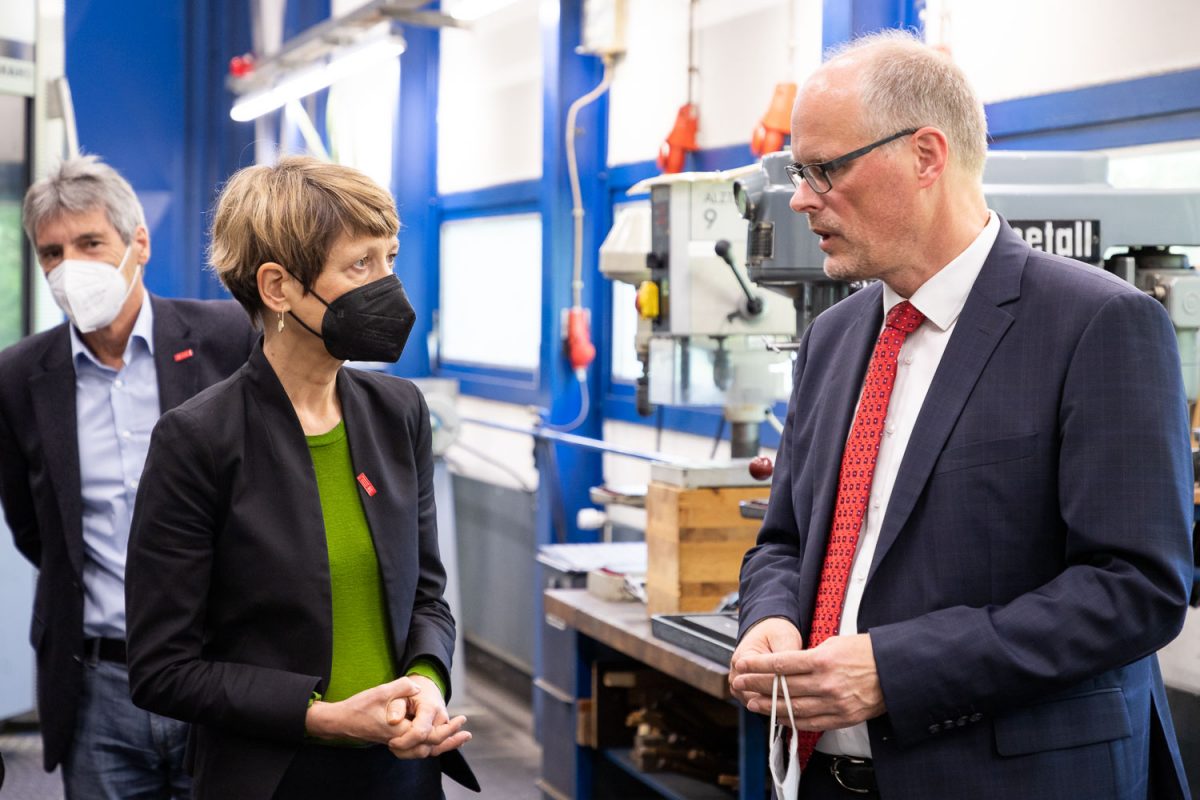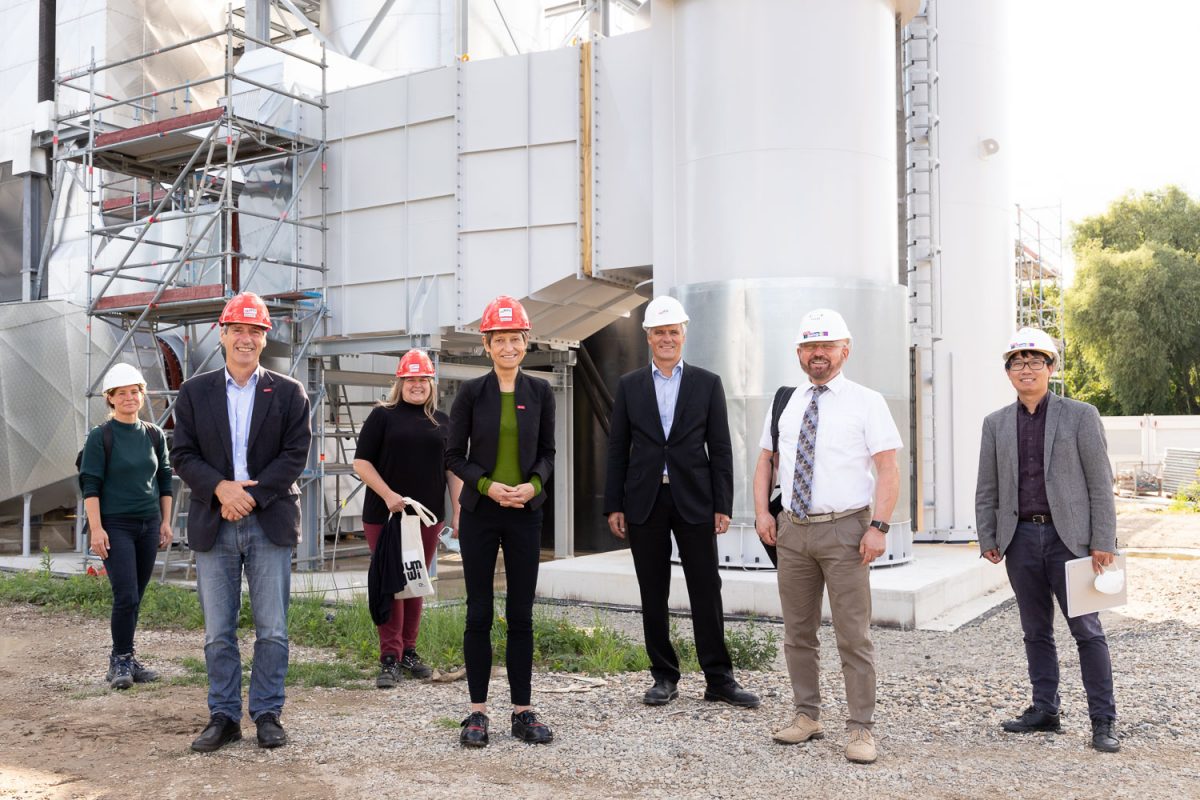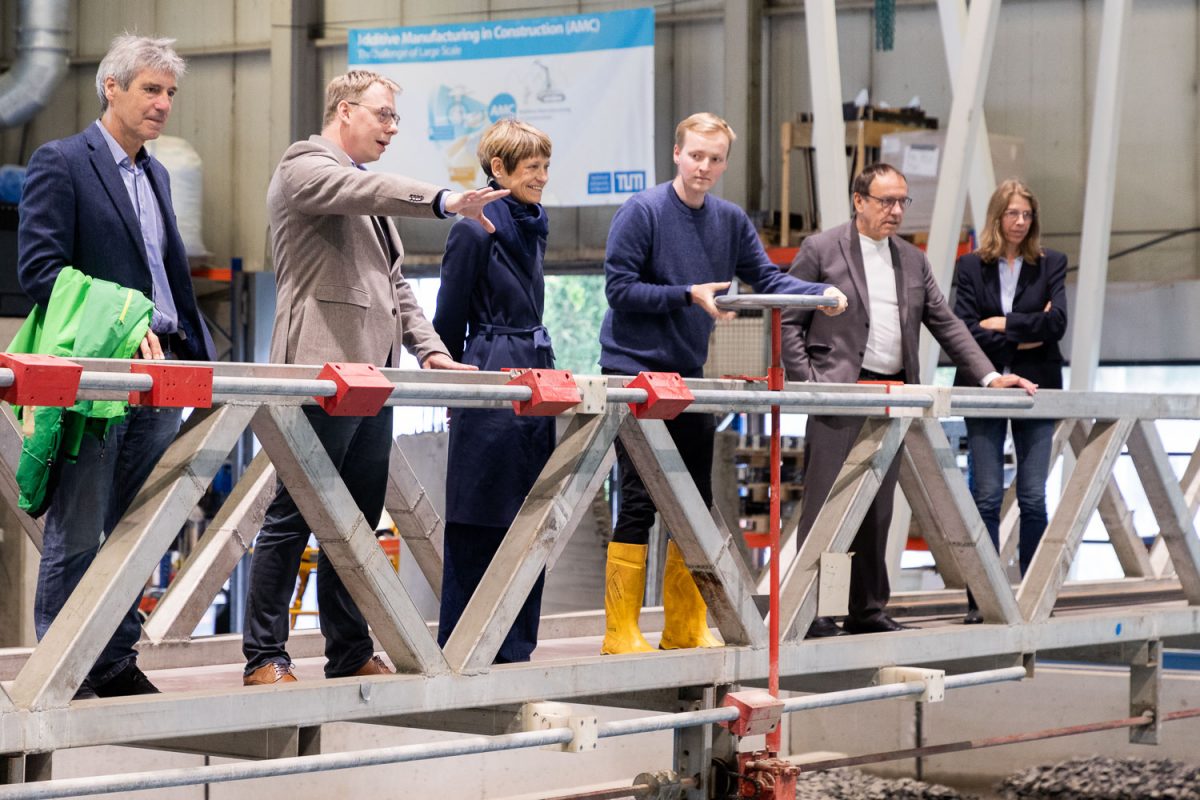Spotlight: Faculty Visits 4 – Diversity from Architecture to ZeBra The President's topics and appointments
My tour of the Faculty of Architecture, Civil Engineering and Environmental Sciences started at the Institute of Steel Structures on Beethovenstrasse. The head of the institute, Professor Klaus Thiele, explained current research projects and gave me a tour of the testing hall. Afterwards, I got an insight into the work of the Institute for Computational Modeling in Civil Engineering and the Institute for Applied Mechanics in exciting short lectures.
Then it was over to the neighboring Institute of Building Materials, Concrete Construction and Fire Safety (iBMB). In an introductory lecture, Professor Jochen Zehfuß explained what his institute does in the areas of teaching, research and continuing education. Of great interest is how the future development of concrete as a building material into eco and high-performance concrete is being developed there. In the hall of the institute, I was able to see how the team cooperates with the Braunschweig Civil Engineering Materials Testing Institute (MPA), which is also located in the building. Afterwards, I was given a guided tour through the test halls of the fire protection department headed by Professor Zehfuß and to the construction site of the new, unique Center for Fire Research (“ZeBra”).
Professor Harald Kloft, Institute for Structural Design, showed me how concrete can even be printed at the TU Braunschweig in the hall of the Leichtweiß Institute for Hydraulic Engineering and Water Resources (LWI). Here I was able to learn, among other things, how the challenge of designing printed concrete or rammed earth in such a way that it is stable for the construction of buildings is dealt with.
We then returned to the central campus. On the roof of the Okerhochhaus, Professor Elisabeth Endres of the Institute for Building Climatology and Energy of Architecture (IBEA) and Professor Berthold H. Penkhues of the Institute of Experimental Design first allowed me to enjoy a great view of Braunschweig. In the drawing rooms in the old building, I admired the sheer countless blueprints and architectural models of our students.
Afterwards, deeply impressed, we returned to Beethovenstraße. In the Institute for Geomechanics and Geotechnics, the five chairs from the Department of Civil Engineering presented themselves. During a subsequent tour, Professor Michael P. Wistuba from the Braunschweig Pavement Engineering Centre gave me a vivid overview of the diverse research foci in the field of asphalt technology.
Back in the hall of the Leichtweiß Institute for Hydraulic Engineering and Water Resources: Here, representatives of the individual departments gave me entertaining insights into their research areas. I was very impressed to see the LWI wave channel in action.
The next item on the program took us to a beautiful allotment not far from the LWI. Here, Professor Wolfgang Durner and colleagues presented the different working groups of his Institute of Geoecology: Landscape Ecology and Environmental Systems Analysis, Climatology and Environmental Meteorology, Environmental Geochemistry, Soil Science and Soil Physics, as well as the Biodiversity of Agricultural Landscapes working group formed jointly with the Thünen Institute. I was very impressed by the diversity and social relevance of the research presented.
To conclude my tour of Faculty III, I was a guest at the Institute of Geosystems and Bioindication at Langer Kamp. Professor Antje Schwalb and her enviably international team told me about their exciting research projects at Lake Constance or on the plateau of Tibet as part of the international research training group TransTiP.
Many thanks to Dean Professor Wolfgang Durner, Managing Director Ina Müller and the entire team of Faculty III for organizing the tour, which provided me with very interesting insights. Once again, this tour made me realize how diverse our university is and how admirably committed the members of the faculties are. It was particularly remarkable how many overlaps there are between the individual institutes and also with institutes of other faculties, despite the wide thematic range in Faculty III.






